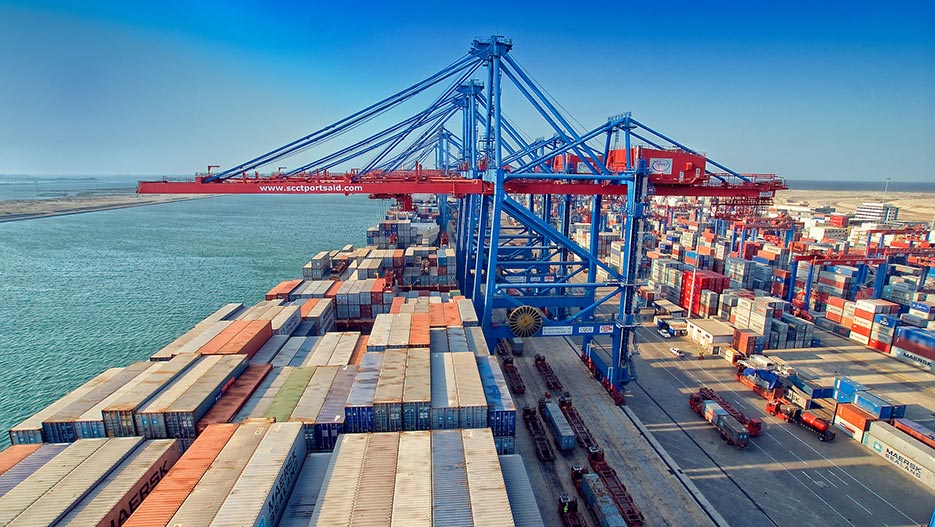Egypt’s strategy for exports
Over the past 40+ years the government of Egypt has created four export promotion units as integral components of its strategy to create jobs through international trade.

Despite all the heated public debates that we have been witnessing in Egypt since the January 2011 uprisings, very little attention has been given to the root causes of the country’s deepest economic problems.
Understandably, as a country moves towards democracy, it must address all the concerns about freedom of expression, political pluralism, elections, security and justice sector reforms, anti-corruption laws, religious rights, women’s rights, and constitutional reform.
However, it is equally important to recognize that regardless of the political affiliation of the new government, it must craft a long-term policy agenda to address the root causes of Egypt’s economic problems.
Failure to do so will be catastrophic not only for the economy, but also for the creation of a secure and stable democratic society.
Government efforts to increase exports
Exports at the end of 2013 reached 147.2 billion Egyptian pounds—up by 11% from 2012, which witnessed exports with a value of 132.7 billion Egyptian pounds.
Sustainable export growth and related overall economic growth is vital to employment creation, the alleviation of poverty and sustainable public expenditures and investment for the general well-being.
No developing nation has achieved rapid, sustainable economic growth without export growth with the private sector as its principal economic actor.
Over the past 40+ years the government of Egypt has created four export promotion units as integral components of its strategy to create jobs through international trade.
In 1996 the government of Egypt reorganized its efforts by placing the four programs under the roof of the newly created Ministry of Trade and Supply (MOTS).
Studies pointed to the need for governments to play a strong role in export promotion; specifically, programs which decrease initial export start up costs for businesses and broaden the base of exporters.
The Egyptian government has set a goal of a 10% growth rate in exports over the next decade as the major catalyst for job creation and economic growth and development—a goal shared by major international donors, including USAID.
Strategy for export: An overview
Egypt suffers from a structural trade deficit problem and thus it cannot generate enough foreign currency earnings to cover the country’s imports and its foreign debt commitments.
This has led to a rapid decline in the foreign currency reserves, which was also accompanied by a steep devaluation of the Egyptian pound, which has lost 17% of its value against the U.S. dollar since January 2011.
Addressing the root causes of this structural trade deficit is Egypt’s most important economic challenge. According to data from the industry ministry, the major export product is petroleum and petroleum products (28.7%), non-oil exports increased from 44 billion Egyptian pounds to 92 billion Egyptian pounds in 2009.
Subsequently, then Industry Minister Rashid Mohamed Rashid proposed a plan to double exports to 200 billion Egyptian pounds within 3 years; however, the plan was revised due to the state of economic conditions following the January revolution, such that the targets for 2012 and 2013 were modified to 130 billion Egyptian pounds and 145 billion Egyptian pounds, respectively.
Exports at the end of 2013 reached 147.2 billion Egyptian pounds—up by 11% from 2012, which witnessed exports with a value of 132.7 billion Egyptian pounds.
Upon the completion of the 2013 strategy, the Ministry developed a new plan for 2014, which targets the value of exports to be 175 billion Egyptian pounds or $25 billion (based on an exchange rate of $1 to LE7).
As a result, the Ministry of industry, foreign trade and investment is launching a new strategy to double exports of non-petroleum Egyptian products over the next four years.
The Ministry prepared an ambitious strategy to double exports that is not based solely the value it achieves, but rather on the quality of products exported and their ability to reach target markets.
The strategy is looking to achieve various criteria, including improving value-added production, employment, environmental preservation and energy preservation, exerting efforts to open up new markets while relying on local producers and suppliers and building their capacity.
The Ministry also is developing legislation to regulate trade and industry, facilitate and develop the rules used by the oversight body and improve specifications and quality control for local products, including those for foreign markets.
Also, more than 80 Egyptian ICT companies have registered to participate in the Export IT program run by the IT Industry Development Agency (ITIDA).
Through the program, ITIDA aims to support Egyptian companies in increasing their exports and reducing the effects of the economic slowdown.
The program was launched in 2010, when 68 companies applied and 57 were accepted, receiving subsidies totaling over 21 million Egyptian pounds. In 2011, the number of applicant companies was 88, of which 76 benefitted from the program, receiving a total of 29 million Egyptian pounds in subsidies. In 2012, the number of applicant companies was 81, of which 73 benefitted from the program, with a total subsidy of 29.5 million Egyptian pounds.
FAIR USE POLICY
This material (including media content) may not be published, broadcasted, rewritten, or redistributed. However, linking directly to the page (including the source, i.e. Marcopolis.net) is permitted and encouraged.